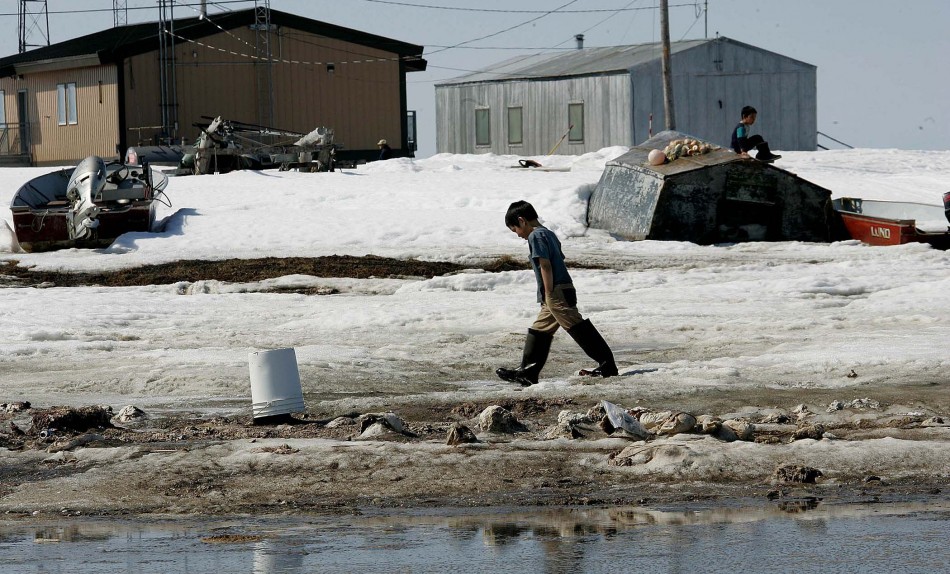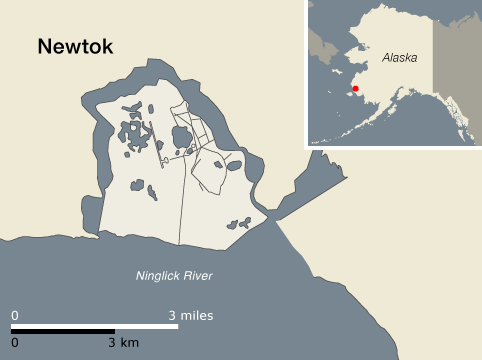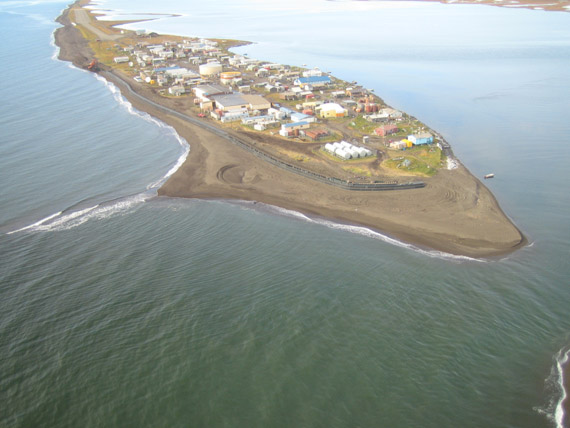Newtok: The Nerve Center of Climate Change

The Guardian has published a superb multimedia series on Alaska, America’s first climate refugees. With land disappearing due to ice melt and waters rushing inland at record pace, Alaska’s gelid coast has become the unfortunate epicenter of climate change. It’s estimated that more than 180 communities are at risk of losing their homes as well as their way of life.

The Guardian team traveled to the small village of Newtok, a site especially vulnerable to the most extreme consequences of rising temperatures. Suzanne Goldenberg and Richard Sprenger interview some of the villagers and lend a louder voice to a city in peril pushing for bureaucratic assistance.
“If Newtok cannot move its people to the new site in time, the village will disappear. A community of 350 people, nearly all related to some degree and all intimately connected to the land, will cease to exist, its inhabitants scattered to the villages and towns of western Alaska, Anchorage and beyond.”
The outlines of this tragic upheaval can be traced back to a few key facts. Average temperatures in Alaska have risen by 4 degrees Fahrenheit over the last fifty years—a few ticks on the geological clock. The change has triggered immediate feedbacks, including a gross reduction of sea ice, the thawing of permafrost, erosion and other exogenetic processes which threaten the livelihood and very survival of Alaskan communities.
Normally, the sea ice serves as a barricade against harsh storms and fierce trade winds. With sea ice in retreat, storms penetrate further inland and leave more damage in their wake. Moreover, the rising waters from nearby rivers flood and erode the land area and loosen the permafrost undergirding Alaskan infrastructure, facilitating further erosion of the moldering subsoil. On average the adjoining rivers displace around 100 ft of land each year. In the most grimly literal sense possible, climate change is gradually stealing the ground from beneath the Alaskans’ feet.
Even worse, as the active layer sitting atop the permafrost thaws and decomposes, CO2 and methane are released into the atmosphere, creating a positive feedback loop on the radiation budget and further perpetuating the unforgiving cycle of warming.
At final tally, more than 86% of all native communities will need to relocate.
Relocation talks began in 2007, but the high costs and logistical uncertainties have repeatedly stalled the move. A report by the Army Corps of Engineers pegs the total cost at $130 million, or $350,000 per villager. A number of community representatives have worked with authorities to thrash out a resolution, but no firm decisions or timetable have been forthcoming. While council talks languish in state boardrooms, the people of Newtok are left defenseless, with one eye on the encroaching seas, the other on an uncertain future.
“This is completely a human rights issue,” Bronen said. “When you are talking about a people who have done the least to contribute to our climate crisis facing such dramatic consequences as a result of climate change, we have a moral and legal responsibility to respond and provide the funding needed so that these communities are not in danger.”

Inupiaq Eskimo village of Kivalina, Alaska
Further reading:
- Part One: America’s first climate refugees
- Part Two: An undeniable truth?
- Part Three: “It’s happening now… The village is sinking”


Comments